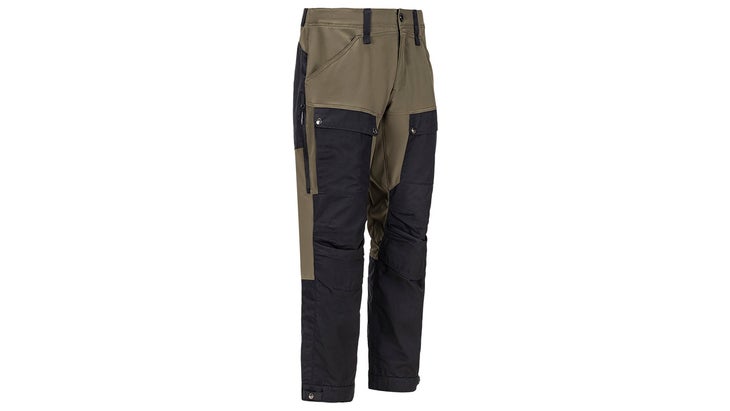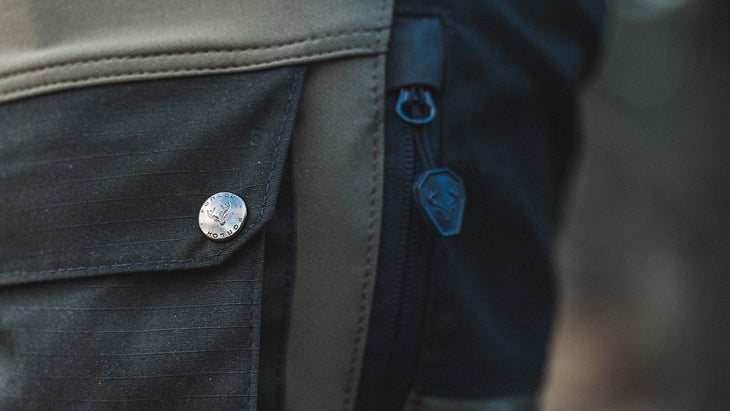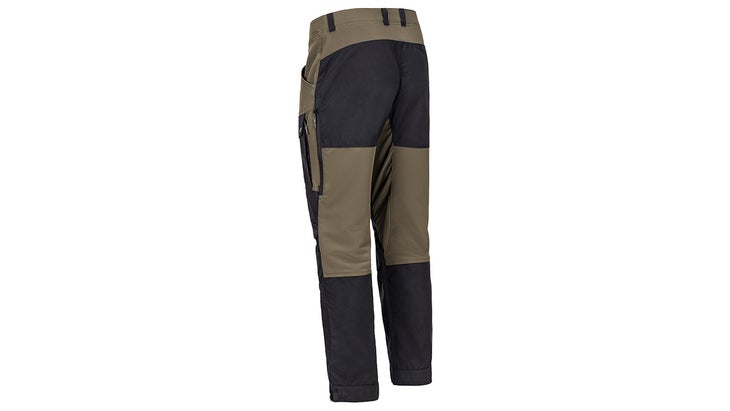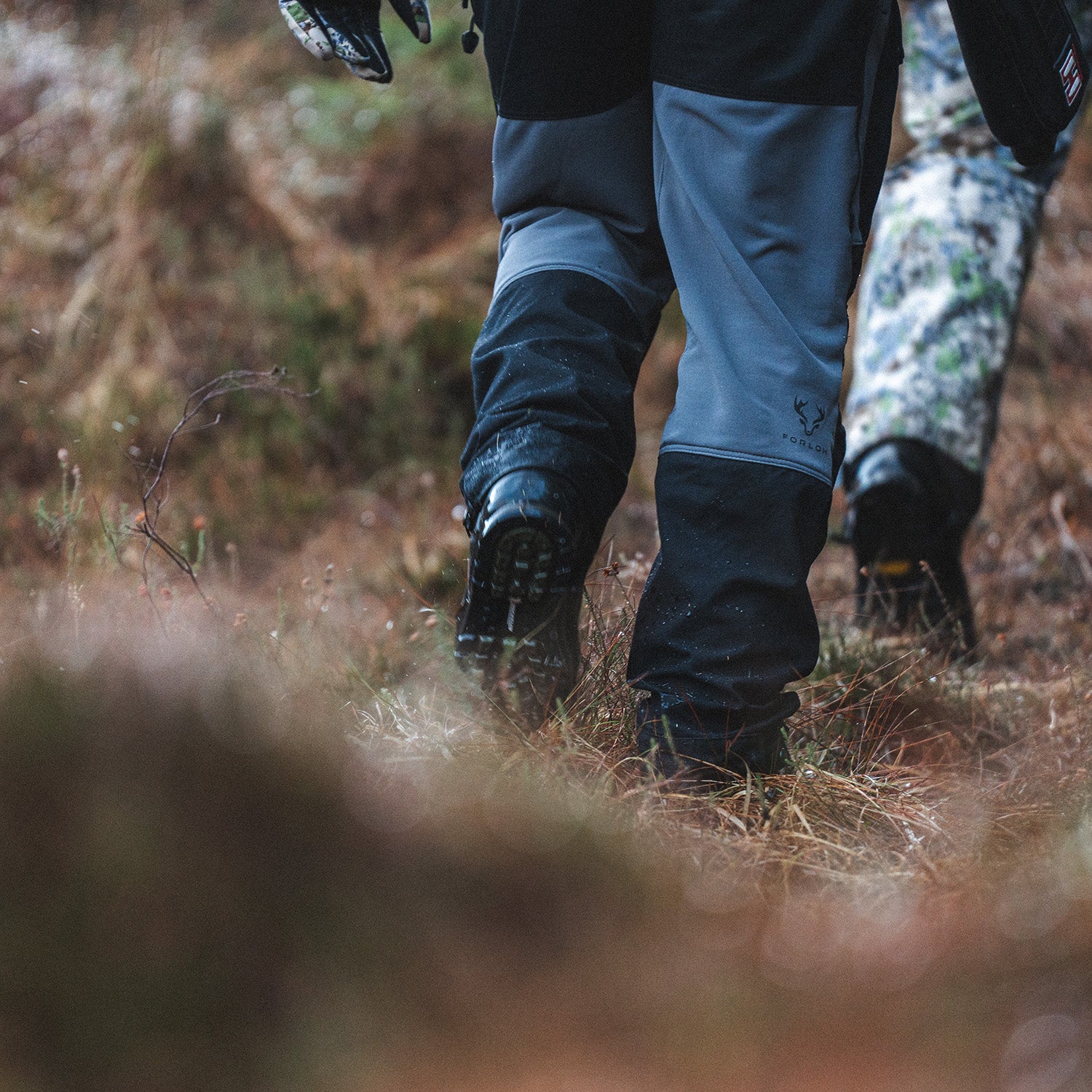It’s not every day that someone makes a pair of pants just for you. But that’s exactly what happened with these new ($259). Let me explain how it happened, and why it should matter to you, fellow outdoorsy pants wearer.
Since 2017 or so, I’ve been wearing Fjallraven Kebs ($255) most of the time I’m active outdoors. In fact, I called them “Damn near perfect,” in a review the next year. They do a good job of combining freedom of movement with durability, and have really good pockets. The fact that they flatter my slim proportions, and are made by a brand I like just seals the deal.
What’s Forloh, Actually?
In fall of 2020, some guy named Andy Techmanski called me and invited me to come elk hunting with him and his son. Techmanski was launching a new, 100 percent American-made and sourced clothing brand targeted at hunters, and figured the most effective way to show it to me would be to actually go hunting in it. One of his employees allegedly sent me a box of gear, but it never turned up, so I ended up going on that hunt in my Fjallravens. We saw no elk, but enjoyed each other’s company, and now try to grab a few days in the mountains together every fall.
That was the story in 2022, when Robert Yturri tagged along too. Techmanski had tapped Yturri to lead development for Forloh, his new made-in-America brand. And after spending most of his career at pretty much every major technical clothing brand you’ve ever heard of watching production get outsourced overseas, Robert jumped at the opportunity to return to making apparel in the United States.
At some point that weekend, all three of us were knocking back a few beers, and Techmanski looked at my pants, pointed them out to Yturri, and asked him if Forloh could do better.
I promptly forgot about that conversation until, a few weeks ago, I opened up a box from Techmanski and found a pair of pants inside that looked a lot like the Fjallravens, but felt higher quality to the touch.

I texted Andy to see what the deal was. His response? “They are way better with more tech.” To find out how and why, I called Yturri, who’s over in Africa taking his son hunting right now.
“The Fjallravens are a great pant for hunting,” Yturri explains. “But they were made for trekking.”
Yturri acknowledges that he drew heavily from the Fjallraven Keb concept, then figured out a way to make it in America, from American-made materials (the Fjallravens are made in Vietnam from internationally sourced parts). The big difference? “They’re damn similar, but we’re hardier,” he says.

What Makes a Pair of Pants Good for Hunting?
Where hiking, backpacking, and most other casual outdoor activities largely take place on trails, the kind of adventurous mountain hunting the Forloh guys and I are into takes us as far off-trail as possible. So where a hiker is primarily concerned with movement, comfort, and weather resistance, a hunter also has to consider things like abrasion, tear resistance, and durability. We spend more time wading through thick, thorny brush, sliding down scree fields on our butts, and crawling around on our hands and knees trying to convince ourselves that we’re being quiet.
None of that is to say that that the merits of a designed-for-hunting product won’t appeal or be relevant to other users. Product designers just love to envision hero use cases to define the problems they’re trying to solve. If you clear brush on a rural property, chase your dog through bushes, or are just really bad at navigating, then Forloh’s Brush to Mountain pants will also work for you.
To add in that “hardiness” to the basic Fjallraven formula, Yturri tells me he started by sourcing an American-made ripstop polyester-cotton blend fabric for the seat, knee, and calf reinforcements. The Swedish brand’s G1000 fabric is also a poly-cotton, but doesn’t feature woven-in barriers to halt tears before they can grow.
Those reinforcements are then mounted to the same stretch-woven polyester-spandex blend fabric Forloh uses in in its (also excellent) . That’s a four-way stretch material made in a hefty 315 grams-per-square-meter weight, which is also treated with a durable water repellant coating.
Why Waxed Cotton Works Better Than Untreated Cotton
Where synthetic materials like polyester and spandex don’t absorb water, cotton can absorb up to 27 times its weight in sweat, precipitation, or submersion. That’s why it’s the absolute —everywhere but the desert—at least in untreated form. But cotton is much stronger than synthetic fibers. Woven into a canvas, it’s also much more abrasion and tear resistant than its more weather-ready alternatives. And, fortunately, the hollow construction of cotton fibers is just as happy to soak up wax as it is water. When filled with wax, cotton becomes highly water resistant.
I’ve previously taken a deep dive into what makes waxed cotton so different from it’s untreated alternative.

Yturri tells me that applying wax to the poly-cotton ripstop canvas also increases abrasion and water resistance by up to 50 percent. And while the Forloh pants ship pre-waxed, the technology allows users to modify garments to their own needs. Planning a wet weekend? Rub a bar of Forloh’s proprietary all-natural wax treatment (also made and sourced in America, it smells like a pine tree) thoroughly over the ripstop reinforcements before heading out.
Spend a few years wearing and washing the Fjallravens, and eventually the stretch-woven panels will start to grow thin and come apart. Yturri says Forloh’s pants should last considerably longer before doing the same due to their thicker, higher quality weave. He also points to the zipper pulls as another weak area he’s addressed.
Why I Choose Forloh Above All Else
One area where I’ve had problems with the Fjallravens is in the belt loops, which are barely able to accommodate a 1.5-inch thick rigging belt and eventually fail when stretched out by that belt, and the four pound Glock 20 I use it to carry.
Yturri explains that Fjallraven’s belt loops are connected to the pants with an automated belt loop machine using “just regular sewing.” In contrast, Forloh stitches its much more generously sized, reinforced belt loops on by hand using bar tack stitching. Forloh then stitches a suede-like reinforcement around the entire inner perimeter of the waistband so those stitches won’t get abraded by wear. That waistband is also fitted with silicone inlays to help keep your shirt tucked in.
Small details like that really add up, especially in something like a pant that you just want to put on and forget. Another example? The Fjallraven kneepad pockets are simply square, with a portion left unstitched at the bottom through which you can insert those pads. That means the pads tend to work their way out over time, especially at inopportune moments when you’re kneeling or crawling. To counteract that, Forloh folded its kneepad pockets over internally by a few inches and sized the pocket to the exact dimensions of its American-made, non-Newtonian , so those’ll never accidentally come loose.

None of that was actually hard for Forloh, it’s just the process Yturri, Techmanski, and all their employees put into making technical clothing that doesn’t cut corners. Yturri says the hard part was actually finding a way to print Forloh’s proprietary, science-based camouflage scheme on a ripstop poly-cotton canvas.
To do that, the company turned to a military supplier, since like Forloh, the U.S. Government sources its clothing in America. But where the Army’s camo pattern only contains four colors, Forloh’s contains 13. Yturri says he’s spent a big portion of the last two years working with the supplier to figure that out, and is why the BTM pants are initially launching in plain colors only.
So those elk might be able to see my legs when Techmanski and I try to find some this fall. But I’ll be able to go looking for them in a much more durable pant, complete with intact belt loops, knee pads that stay where you want them, and the satisfaction that I’m supporting domestic manufacturing and American workers.


